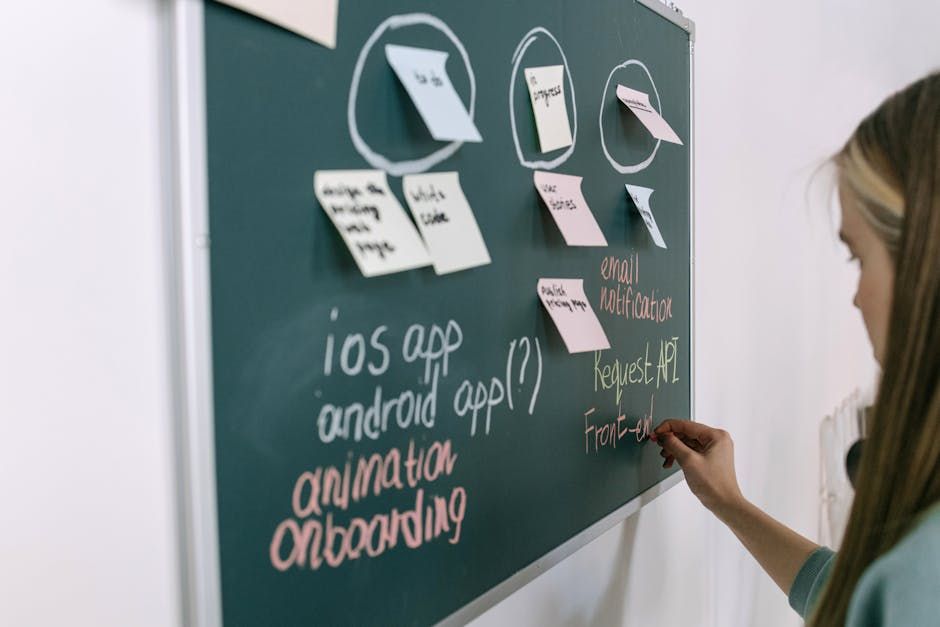In the rapidly evolving world of mobile app development, many companies cling to outdated practices that hinder innovation and efficiency. This article explores the pitfalls of conventional methodologies and examines progressive alternatives that can enhance productivity and user engagement.
Traditional app development often involves a waterfall model, which can lead to significant challenges. For instance, companies like Yahoo have faced setbacks due to rigid project timelines and a lack of flexibility in adapting to user feedback. This approach often results in products that do not meet market demands or user expectations.
One major issue with this model is the delayed feedback loop. When teams operate in silos, they miss opportunities for early user testing. This was evident when Black Berry failed to adapt its operating system quickly enough to meet the rise of touch-screen smartphones. By the time they attempted to innovate, it was too late, and they lost significant market share.
Another challenge is that the waterfall model does not cater well to changes in technology. For example, consider Facebook, which regularly updates its app to incorporate new features based on user feedback. Their agile approach allows for continuous integration and deployment, keeping their platform relevant and engaging.
Emerging Alternatives: Agile and Cross-Platform Development
In contrast to traditional methods, agile development practices have gained traction among top companies.Spotify employs agile methodologies that emphasise collaboration and adaptability. Their squads operate like small teams, enabling quick iterations and direct user involvement, which significantly improves user satisfaction.
Moreover, cross-platform development frameworks like React Native and Flutter are reshaping how apps are built. These technologies allow developers to write code once and deploy it across multiple platforms, reducing development time and cost. For instance, Bloomberg successfully adopted React Native to create a seamless experience across both iOS and Android platforms, demonstrating efficiency in development without compromising on quality.
When comparing traditional approaches to agile and cross-platform development, it is essential to consider various factors:
- Time to Market: Agile and cross-platform strategies significantly reduce time to market, allowing companies to stay competitive.
- Cost Efficiency: Using a single codebase for multiple platforms cuts down on development and maintenance costs.
- User Engagement: Agile methodologies promote user feedback throughout the development process, leading to higher user satisfaction.
In contrast, traditional approaches often result in longer timelines and increased costs due to the need for separate development efforts for each platform.
For companies looking to implement agile practices, the following steps can serve as a guide:
- Form Cross-Functional Teams: Assemble teams with diverse skills, including developers, designers, and product owners, to foster collaboration.
- Prioritise User Stories: Develop user stories to understand the needs and preferences of your target audience better.
- Conduct Regular Sprints: Implement short sprints to allow for iterative development and rapid adjustments based on user feedback.
- Utilise Continuous Integration Tools: Adopt tools like Jenkins or CircleCI to automate testing and deployment, ensuring quality at every stage of development.
Companies such as Airbnb and Slack have successfully adopted these practices, leading to high-quality applications that resonate with users.
A Contrarian Perspective: Embracing Imperfection
While the emphasis on perfection in app development is common, it can often lead to stagnation. Many companies spend excessive time perfecting their apps before launch, which can result in missed opportunities. Instead, adopting a 'minimum viable product' (MVP) mindset can be beneficial.
For example, when Instagram first launched, it had limited features compared to what it offers today. However, by focusing on core functionalities and allowing users to provide feedback, Instagram evolved into a powerhouse of social media engagement. This approach demonstrates that launching a simpler version of an app can pave the way for future enhancements and innovation.
In conclusion, traditional app development practices often fall short in today’s fast-paced environment. By embracing agile methodologies and cross-platform development, companies can significantly improve their app development processes. Furthermore, adopting an MVP approach can lead to quicker iterations and better alignment with user expectations. As the landscape of mobile app development continues to evolve, it’s crucial for businesses to adapt and innovate to stay competitive in the market.

Photo by Ferhat Cengiz on Pexels (https://www.pexels.com/photo/galata-tower-and-skyline-in-istanbul-turkey-33283799/)

Photo by Pixabay on Pexels (https://www.pexels.com/photo/person-holding-android-smartphone-with-black-screen-301718/)


